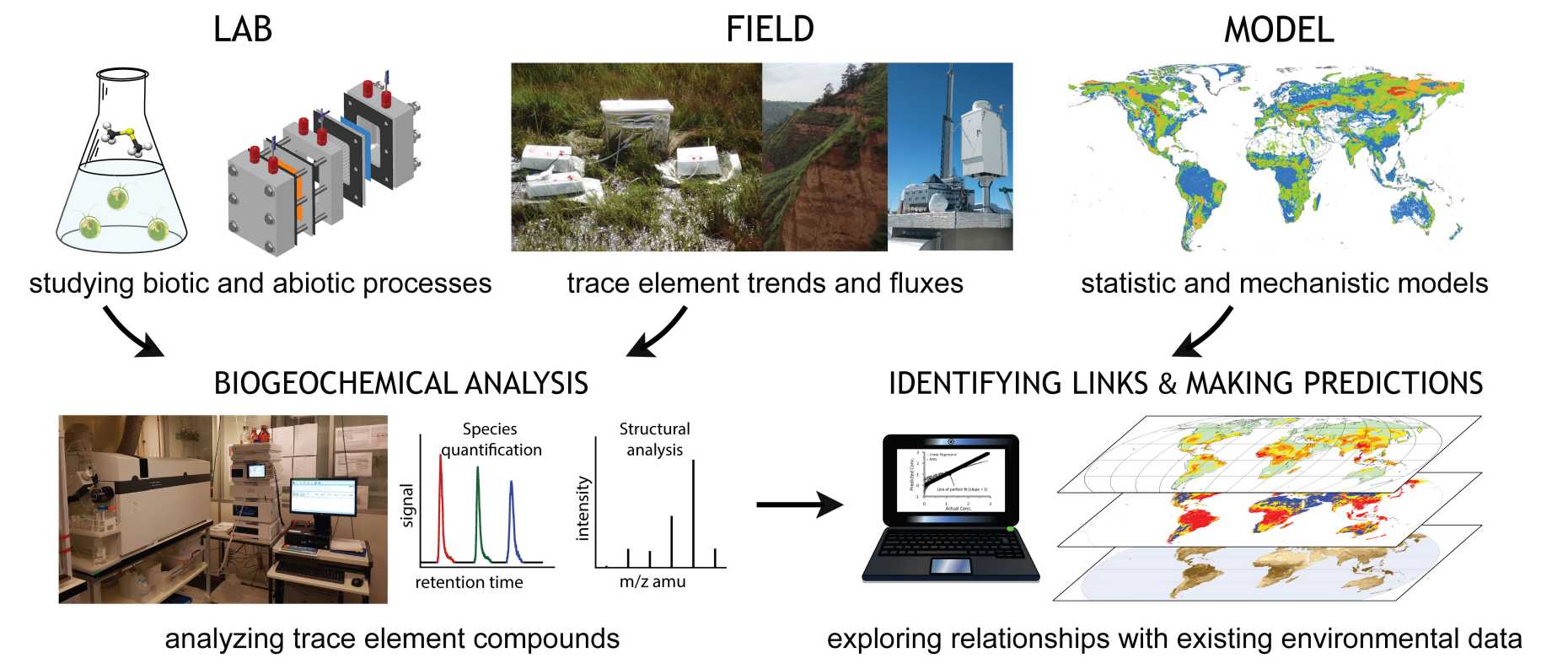Research interests
Our research is aimed at obtaining an improved understanding of the processes controlling the biogeochemical cycling and environmental distribution of trace elements, as well as predicting the effects of climate and environmental changes on these processes and environmental trace element distributions. To tackle these goals we combine experimental work (lab and field), field measurements, and modeling studies (see Figure above/below). Our research has focused on different trace elements, particularly selenium (Se) and arsenic (As) but also other elements as halogens (Br, I) and sulfur (S).
Most trace elements are characterized by uneven environmental distributions, which result in major health impacts. For example, selenium has an uneven distribution in soils and up to 1 in 7 people worldwide are affected by low selenium intake, due to low selenium levels in soils and varying bioavailability to plants. Selenium is a key component of the 21st amino acid selenocysteine and therefore an essential micronutrient to humans. In contrast to selenium, the element arsenic is not essential for humans and is toxic over its entire intake range. Natural contamination of groundwater by arsenic affects the health of over 150 million people, mainly in the regions of South and Southeast Asia. Although the character of these health issues, i.e., trace element deficiency versus toxicity is very different, the origin of both problems lies in the concentration in which these elements are present in the environment and their chemical form (i.e., speciation). Therefore, our research focuses on analyzing concentrations of trace element and its speciation in the environment, as well as predicting and modeling their environmental distribution.

